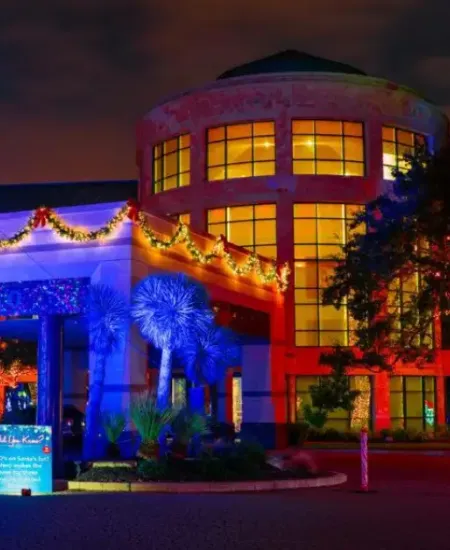Turning Your Home into a Winter Wonderland with Musical Light Displays
Remember that sense of wonder you felt as a kid when you saw those first twinkling holiday lights of the season? Now imagine if those lights danced and flickered in sync with your favorite holiday tunes. Sounds magical, doesn't it? Well, grab a cup of cocoa, because I’m about to spill the secrets on how you can create your very own musical light display this Christmas.
Why Sync Lights with Music?
There’s something undeniably enchanting about lights that pulse and shimmer to the beat of music—it transforms your environment, giving it a heartbeat of its own. I stumbled upon this wizardry at a local holiday park last year. The crowd was in awe, faces lit both by joy and the synchronized lights above. That was the moment I knew my holiday decorations needed an upgrade.
Syncing your Christmas lights with music not only captivates onlookers but also adds a personal touch to your decor. It tells a story, your story, through carefully curated songs and light patterns that showcase your love for the holiday season. If you're looking to level up from basic twinkle setups, designing your own animated light display is a great place to start for understanding movement and musical choreography.
Understanding the Basics of Synchronized Light Displays
The core of a music-synchronized light display is a seemingly simple concept: lights react to audio cues. But peel back the layers, and you’ll find it’s a blend of artistry and technical know-how. Here’s how it generally works:
- Music Source: This could be any audio file on your computer or mobile device.
- Controller: The tech magic happens here; it interprets the music into signals.
- Lights: These are connected to the controller and react according to the programmed patterns.
This might sound a bit technical, and truth be told, my first dive into it was intimidating. But with the right tools and a sprinkle of patience, you’ll be orchestrating your light masterpiece in no time!
Choosing the Right Hardware
To start your musical light journey, you’ll need some key pieces of equipment:
- A controller: This is the brain of the operation. Controllers range from simple home solutions like Arduino boards to sophisticated commercial systems like Light-O-Rama. If you're feeling adventurous, designing and programming Arduino-based light shows can give you the freedom to create highly customized effects.
- Lights: Opt for LED lights. They're not only energy-efficient but also come in a wide variety of shapes and colors. RGB LEDs are particularly popular because they can create any color you can imagine, making your display even more dynamic.
- Software: This will help you design and program your light show. There are several software options available, like xLights or Vixen, which are user-friendly and designed specifically for light shows.
- Speakers: What’s a musical display without sound? Ensure your speakers are suitable for outdoor use if that’s where your display will be. (nytimes.com)
Shopping for these components reminded me of setting up my first home theater system—mixing excitement with a dash of ‘what have I gotten myself into?’ Fortunately, most modern lighting kits come with comprehensive instructions. Plus, online forums and videos are gold mines for troubleshooting tips.
Programming Your Display
Here’s where your creativity can shine. Programming might sound daunting, but many software options offer intuitive interfaces that guide you through the process. You generally start by choosing a song, which you can upload directly into the software. From there, you’ll mark down the beats and decide how you want your lights to respond to different elements of the music. Think of it as choreographing a dance, but with lights.
The first time I programmed a song, it was a mess—lights flickering randomly instead of dancing gracefully. After some trial and error (and a few laughs), I started to get the hang of it. My advice? Start simple. Choose a song with a clear, steady beat and build from there.
Installation Tips for a Seamless Setup
Installing your synchronized light display might be challenging, but it’s also a chance to get creative with the layout. Here are some tips that helped me:
- Plan your layout: Sketch out your design before you start hanging lights. Consider which parts of your house or yard will showcase your designs best.
- Check your equipment: Test all lights and cables before installation. It’s no fun discovering a burnt-out bulb mid-show.
- Safety first: Use insulated holders for securing lights and keep electrical connections away from snow or puddles.
If you’re planning a themed entry or pathway, building a lighted archway can be a striking complement to a music-synced yard.
Taking these steps made my installation process a lot smoother and safer, transforming potential frustrations into a workable plan.
Sharing the Holiday Spirit
Once you’ve got your display up and running, it’s time to share it with the world. Invite neighbors, friends, and family to enjoy the festive spectacle. You might even inspire them to create their own displays, spreading the holiday cheer even further.
Wrapping It Up
Creating a custom light display that syncs with music might sound like a Herculean task, but it’s incredibly rewarding. Not only do you get to enjoy the result, but you also create a magnet for holiday joy right in your front yard. This project combines technology, creativity, and the spirit of the season into one dazzling presentation. So why not give it a shot? Dive into the world of musical light displays and make this holiday unforgettable!
Good luck, and happy holidays!
Subscribe to our email newsletter and unlock access to members-only content and exclusive updates.

Comments